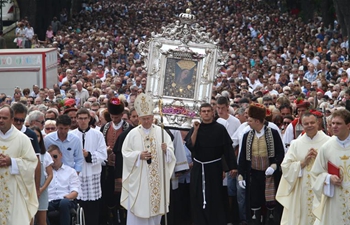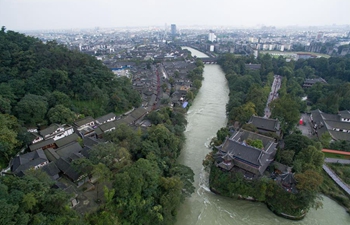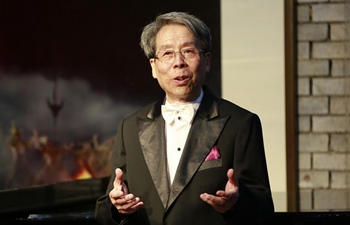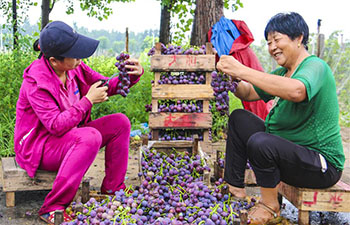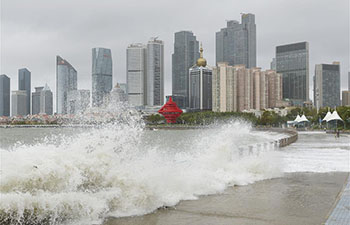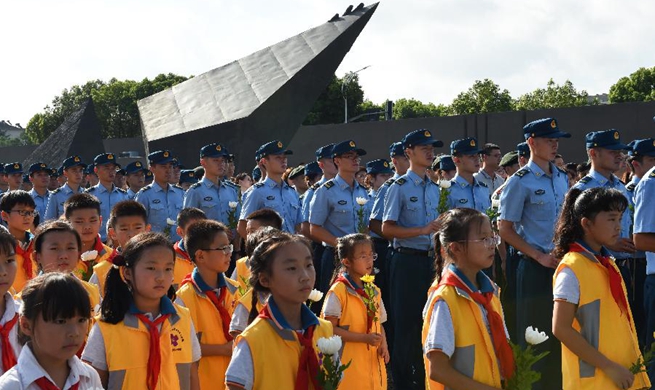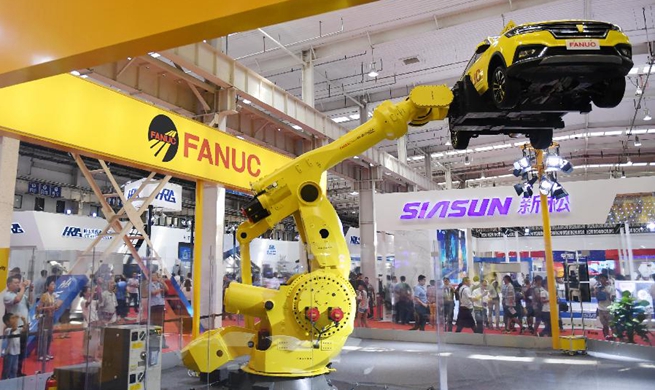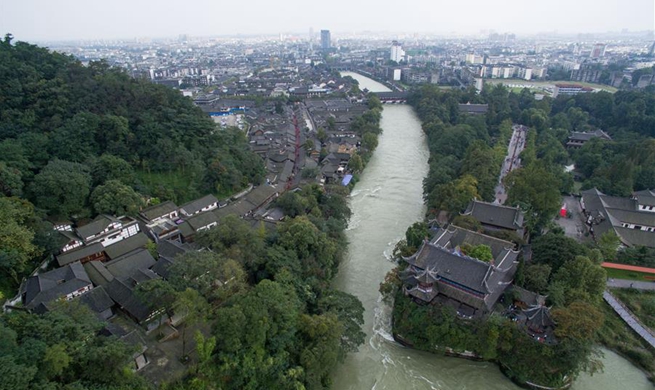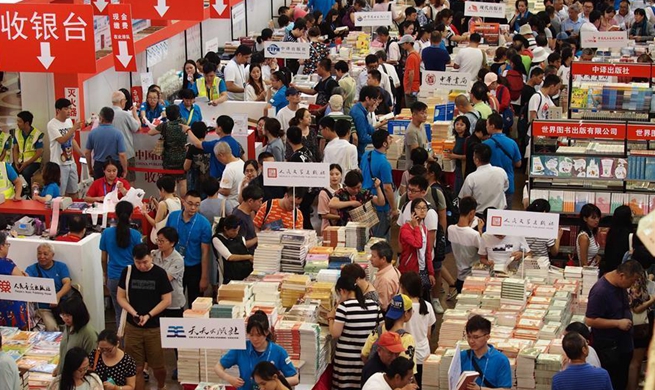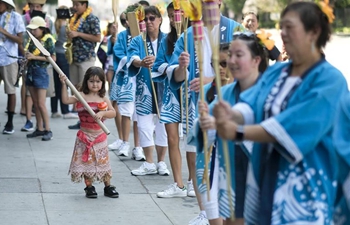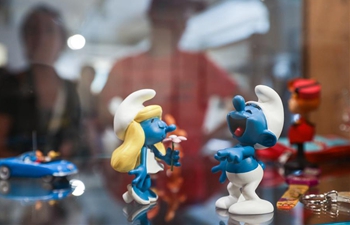by Alessandra Cardone
GENOA, Italy, Aug. 15 (Xinhua) -- A day after suffering its major structural disaster in decades, the northwestern Italian city of Genoa still struggled to cope with reality.
An eerie atmosphere lingered around the scene of the disaster, less than three kilometres away from the populous Sampierdarena district.
This was where the mid-section of a major viaduct -- called "Morandi Bridge" -- suddenly crashed down around noon on Tuesday, dropping tonnes of concrete debris, and sending dozens of vehicles falling 45 meters to the ground.
The whole area remained cordoned off by police, while hundreds of rescue officers kept working non-stop to try to reach possible survivors.
The provisional death toll of the incident was 39 as of late Wednesday. Yet, the civil protection agency warned the figure would be "constantly updated" until all operations were concluded.
In a day traditionally devoted to family trips and vacation -- Aug. 15 being a major summer holiday in Italy -- the people of Genoa could not think of anything but what happened.
"I feel like a miraculous survivor ... indeed we all are, because we have always been driving several times a day on that bridge," taxi driver Giuliano Fiorella told Xinhua, referring to himself and his colleagues.
The man was driving in the tunnel that led to the west part of the bridge on Tuesday, with a passenger on board heading to Milan in Lombardy.
He reached the end of the tunnel at 11:54 a.m.
"I was maybe thirty meters from the bridge, and I saw the two cars before me stopping. I also stopped my taxi, and I started seeing people running towards me from the bridge into the tunnel," Fiorella explained.
"They were all wet, since it was raining heavily, and many had children in their arms."
"They appeared distraught, and were shouting 'Run away, run away, the bridge has collapsed'... At first, I could not make sense of what they were saying," he said.
Fiorella was lucky: nor him nor any of his relatives were involved in the incident. Yet, his hands started shaking as soon as he recalled the event.
Engineer Arturo Antonelli, a senior officer with Genoa's Firefighter Provincial Headquarters, was among the first emergency crews to reach the site of the incident. His account was less emotional, due to his long experience as emergency worker, yet still dramatic.
"One major difficulty in the immediate aftermath was to reach the site: we struggled to find secondary roads leading to where the bridge had crashed," Antonelli explained to Xinhua.
"It was raining hard at that moment, and that also made things harder," he added.
The "Morandi Bridge" was a 1,182-meter long viaduct linking the western part of Genoa to the east, and a major connection to two highways leading toward Milan and towards the French border respectively.
It did not stand above a residential area, which would explain the still moderate number of victims. Yet, when a portion of about 100 metres of the bridge caved in, at least 30 cars and three heavy trucks were passing through it, local authorities estimated.
As such, as soon as they reached the site, rescuers focused their efforts on the vehicles that had fallen, but had not been crashed under concrete rubble.
"We were able to see about 30 vehicles, approximately," Antonelli said.
"The most difficult job in that phase was to recover some vehicles that had only partially fallen and were like suspended in the air, because they were at risk of falling from the bridge's remains."
He explained they had to operate "from above" to avoid further burdening the structure. "In that way, we managed to pull out about 5 people alive."
Some 12 hours after the incident, however, men and dog units were not enough anymore.
"Since last night (Tuesday), search activities have changed, and we have been using cranes and heavy equipment to remove concrete rubble," Italy's firefighters spokesman Luca Cari told Xinhua.
"This was necessary to allow fire dogs and Urban Search and Rescue (USAR) units to gain access to the major concrete debris, and check the possible presence of people trapped," Cari said.
It was a dangerous work for rescuers.
"Cranes and heavy equipment can jeopardize the stability of the structure still standing: if this happens, firefighters on the ground could be involved in further collapses," Cari specified.
Looking exhausted after long hours of uninterrupted work, the spokesman could not estimate the time still needed to end their work.
"This phase is very complicated, and therefore can be very long."
As such, while two days of mourning were marked in Genoa on Aug. 15-16, the massive rescue operation would go on. And what remained of the huge bridge was kept under constant monitoring to give rescuers a timely warning in case of further danger.
